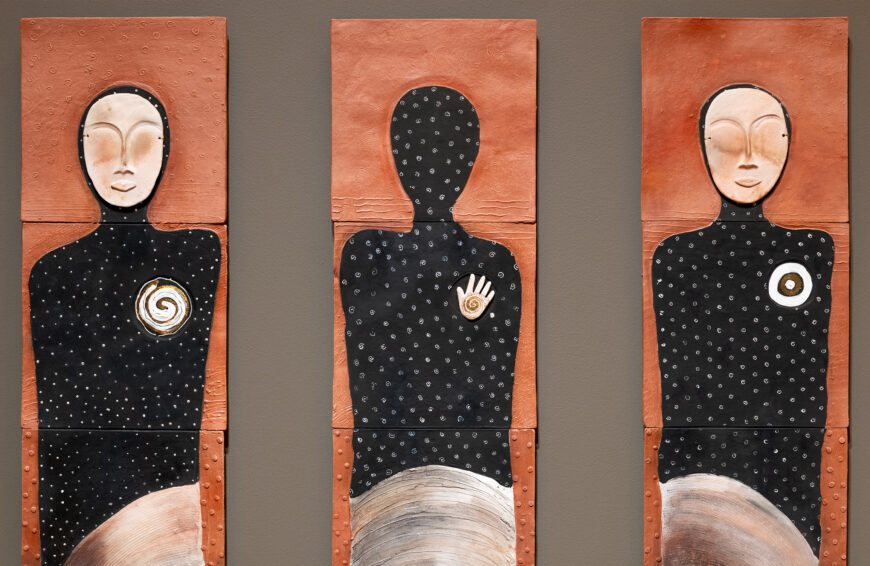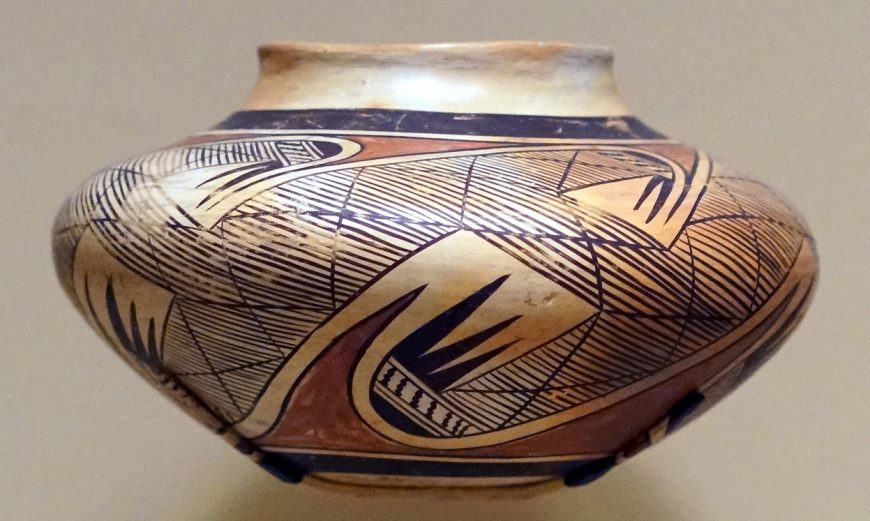Connections between the southwestern U.S. and Mesoamerica are revealed in these vessels featuring parrots or macaws and a merchant.
Effigy jar, c. 1200–1450, clay and paint, Paquimé, Chihuahua, Mexico, 23 x 18 cm; and jar with parrot design, c. 1150–1450, coiled and hand built, painted clay, attributed to Paquimé, Chihuahua, Mexico, 20 x 24 cm (National Museum of the American Indian, New York)




